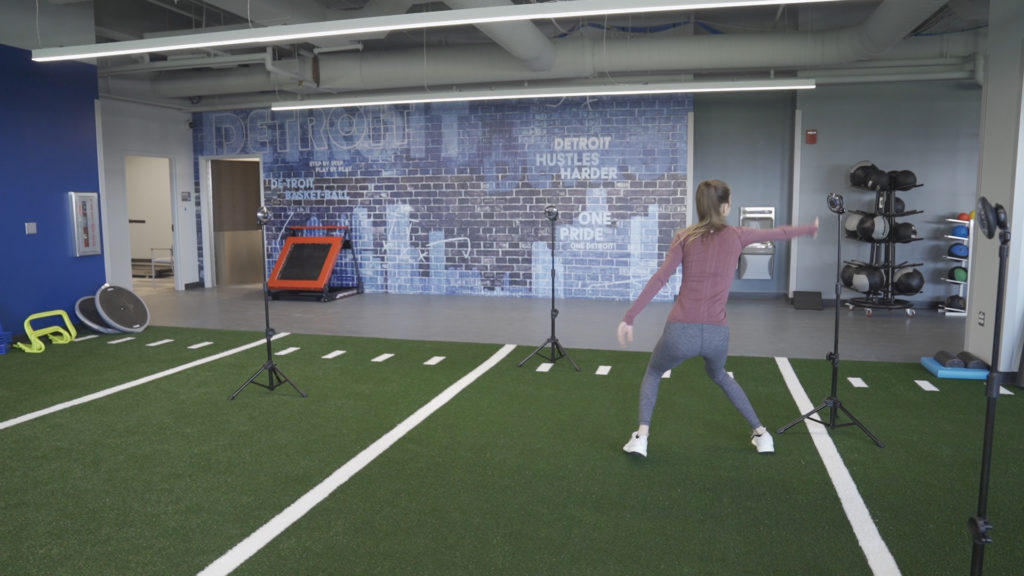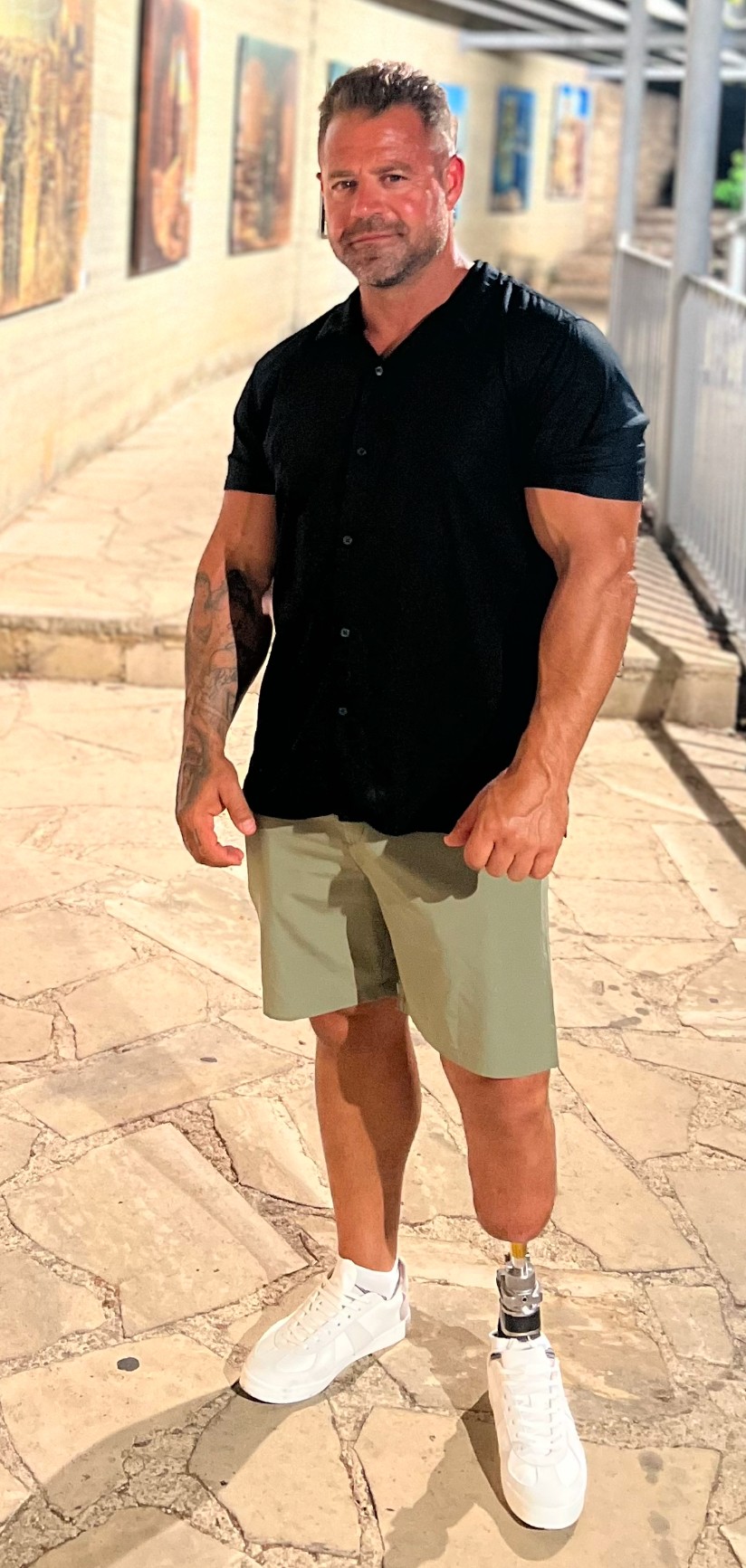At the new William Clay Ford Center for Athletic Medicine, athletes at all levels of sport, weekend warriors and those who exercise to simply stay active will have access to the latest advancements in sports performance technology and physical therapy to boost performance and rehab an injury.
“One thing that we do better than a lot of other places is we look at the whole body, how it performs and figure out the why (in case of an injury),” says David Tomsich, DPT, director of sports rehab at the new facility and a board-certified specialist in sports physical therapy.
“With the addition of this performance technology, we’re just going to be even better than what we’re doing now.”
The first and second floors are each equipped with a Simi Reality Motion System that uses 3D software and eight high-speed digital cameras to analyze movement and joint angles in real time for minimizing injury and enhancing performance with and without LED markers. The first-floor system will be used in conjunction with a running lab and 60-yard track, which has appeal for recreational and performance runners (marathoners and triathletes) looking to tweak their technique or boost their output. Athletes in running sports like soccer and lacrosse also are ideal candidates for this kind of performance assessment.
The 3D system is a step-up from Henry Ford’s current 2D imaging technology with an iPad.
“We can go frame by frame and really nit-pick on how the person moves,” Tomsich says. “We’ll also have the ability to analyze pressure through the foot where they weight bear and estimate the impact of the body into the ground vertically.”
A TV monitor allows runners to watch themselves during an assessment and visualize any movements that can be enhanced to improve their performance. The technology also will benefit patients with gait and balance problems.
“This is the future of sports medicine therapy,” Tomsich says. “It allows us in a more accurate way to assess an athlete or patient in three dimensions, across many joints, their total body movement so we can better identify any impairments to correct to prevent injury or improve performance.”
Also housed on the first floor are the 1080 Quantum Synchro for resistance training and strength conditioning and the AlterG, or gravity-free, treadmill, which allows athletes and patients to rehab from injury sooner without their actual body weight. Both provide real-time analysis. The 1080 Sprint is another resistance training tool for measuring power, force, speed and acceleration.
On the second floor, the Simi system and Speed Zone training system are geared for those looking to
step-up their game to another level and test their readiness before return to sport after injury. The Speed Zone evaluates reaction, speed, agility and endurance by your ability to move to individual squares that illuminate in the floor.
“We’ll be able to look at their mechanics and identify what their limitations are,” says Nick Parkinson, ATC, supervisor of athletic training and a performance training specialist. “And when an athlete is coming back from injury, we can develop a rehab plan for them to get stronger and get them back to their performance level.”
Parkinson says these services will benefit athletes at all levels.
“Who wouldn’t pass up an opportunity to get better at their sport or activity,” he says.
Before they are medically cleared to return to sport, athletes must meet a series of metrics. For example, how do you stop within a certain distance after a 30-foot sprint. It’s all part of the rehab process.
“A person with an ACL tear on their right knee will continue to compensate and not try to use that right side the same way as the left side,” Tomsich says. “They’ll do the same when they land from a jump, when they cut, when they squat. We’ll be able to completely analyze their movements. Part of the rehab process is getting an athlete’s head out of it and getting them to react and move in a reactive environment so they can perform better and have chance of injury.”
In addition to the performance technology, the number of physical therapy tools for rehab is comparable to those found in professional sports teams training facilities. These include blood flow restriction training, therapy lasers, steel mace, ViPR tubes and percussion and compression therapies.
“Our services are all about optimizing movement to improve performance and your quality of life,” Tomsich says. “These tools will help us get better metrics about how people move and how to get them to move better through training and corrective exercises. That’s what we’re going to be able to do.
“It’s not about laying on a table and applying ice. There’s an active component to getting better. You can have two people with Achilles tendinopathy but what caused it could be entirely different for each of them. For us, it’s about finding out the why.”
###
MEDIA CONTACT: David Olejarz / [email protected] / 313.874.4094
Original post https://alertarticles.info




